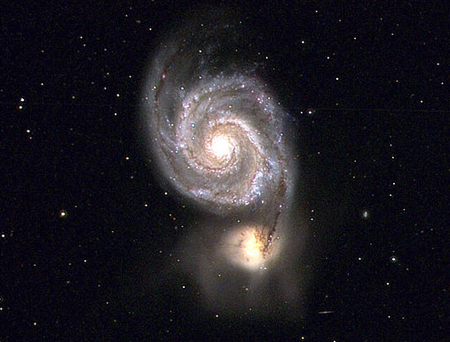Observing Venus

Projected Image of Venus Transit from a Telescope run by George Robinson at the Auburn Dam Overlook in California.
Here on Earth we only have two planets to come between us and the Sun, Venus and Mercury. The Moon comes between us and the Sun, too, and those are solar eclipses, an even very similar to a transit (it wouldn't be totally inappropriate to call it a Lunar transit.)
Why is it Special?
You'd think this would happen all the time. After all, since Venus and Mercury are within the orbit of the Earth, and orbit the Sun in less time than we do, it seems like they'd always be crossing between us and the Sun. The thing is, those planets have orbits that aren't perfectly flat compared to ours. If their orbits were flat compared to the Earth's, then we would see them cross the face of the Sun every time they were at "inferior conjunction", that is, as close to us as they get in their orbit. ("Superior conjunction" is when they're on the far side of the Sun from us.)
But their orbits are tilted. That means that they need to be in a part of their orbit that is in line with our orbit at the same time that they are at inferior conjunction. With planet Mercury, this happens a bit more frequently than once every ten years or so. Since Mercury's orbital time is so much shorter than our own, there are many more opportunities for things to line up like this than with Venus.
Observing Mercury
With Venus, this sort of line-up only occurs a couple of times over the course of a bit over a century. For these last two occasions, those times were separated by eight years, leaving 105 years until the next line-up.
How It Looked
Yesterday was the first transit of Venus I've seen. I missed the last one because I wasn't in a position to travel at the time it occurred. I've seen transits of Mercury, so I thought I knew pretty well what to expect. I expected pretty much the same thing, with Venus a bit larger against the surface of the Sun.
In fact, it was a lot different. For one thing, Venus was a lot larger against the Sun than I expected. It was also a much crisper image, sharply defined at the edges, compared to Mercury. Mercury looked kind of fuzzy, like heat waves were around the edges. Venus was large enough that the edges didn't look this way.
We got to see it through several different telescopes, including two with H-alpha filters that let you see the prominences and solar flares on the Sun. One clever set-up from our friend Larry had a pair of binoculars rubber-banded to a piece of two by four lumber, with a cardboard sun screen, and the image from one of the two binocular lenses projected onto a paper plate at the other end of the two by four. The assembly was supported by the rungs of an overturned stool, which could be turned several ways to get different heights.

Larry, the master of laid-back astronomy, brought this portable solar observatory along with his 8" Dobsonian telescope.
As much as I enjoyed looking at various magnified images, I was most impressed by looking at the Sun directly through a pair of solar filter glasses. The circle of Venus was easy to pick out (Mercury isn't), and it looked a bit eerie just hanging there in the sky in front of the Sun.
It will be a long time until we can see another transit of Venus on Earth (105 years), but there will be a transit of Mercury in 2016, and spaceflight offers more opportunities for viewing transits off of Earth. Hopefully by the time of the next Venus transit, viewing transits of the planets won't be limited to the Earth and low Earth orbit.
A good article on why transits happen as infrequently as they do is at Sky and Telescope.


